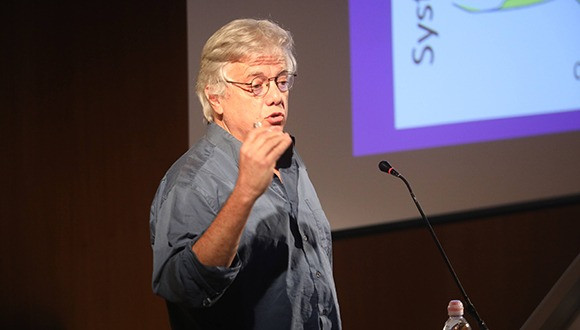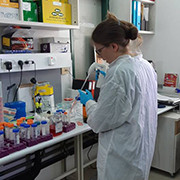How to Make Cancer Cells Go Out with a Bang
A new virus-based therapy targets cancer cells’ ability to die silently, triggering an immune response and enhancing anti-tumor treatments
We all make compromises in life. That is true also for cancer cells. To prosper, they must be able to evade the immune system and internal defenses that prevent cancer from developing. To achieve this, cancer cells must abandon certain internal systems that could otherwise be useful in various situations during cellular life. Prof. Marcelo Ehrlich from Tel Aviv University's Shmunis School of Biomedicine and Cancer Research is studying how to exploit such compromises to fight cancer.
In his latest research, Prof. Ehrlich is working on combining different attacks against cancer cells by leveraging the weaknesses created by these compromises, forcing malignant cells to die a "noisy death"- one that alerts the immune system to the presence of the threat.
A Noisy Death, by Design
One of the systems cancer cells tend to abandon to evade the immune system is the interferon pathway. This system is used by cells to defend themselves against viral infection and communicate with each other, particularly when facing viral threats. When a cell becomes infected by a virus and succumbs to it, one of the functions of the interferon pathway ensures that its death is noisy, and the immune system is alerted to the threat. By disabling this system, cancer cells make sure that even if a specific cell dies, its death remains quiet, failing to alert the body to the malignant danger.
Prof. Ehrlich, in collaboration with his colleague Prof. Eran Bachrach from the Shmunis School, developed a virus that exploits this weakness, specifically attacking cancer cells lacking the interferon pathway, while remaining harmless to healthy cells that retain this functional system. The team engineered the virus to replicate specifically inside cells exhibiting defects in the interferon pathway, causing the targeted cancer cells to die as noisily as possible.
When the Combo Beats the Cancer
However, one of the strengths of tumors is their versatility. Not all cancer cells disable the interferon pathway, and the use of engineered viruses to fight cancer - known as oncolytic viruses - often has limited effects because they fail to infect a sufficient number of tumor cells. To overcome this limitation, Profs. Ehrlich and Bacharach are currently researching combinations of their cancer-killing virus with other treatments to achieve a synergistic effect, where combined therapies enhance each other's effectiveness and lead to increases in both viral infection and cell death.
One approach explored in their latest research involves combining the virus with targeted-therapy compounds. Cancer cells disable the mechanisms that normally limit cell multiplication, allowing them to grow uncontrollably. Targeted therapies may arrest the proliferation of rapidly dividing cells and induce a state of augmented sensitivity to viral infection and virally induced cell death. "In response to anti-cancer treatments, tumor cells attempt to ensure their deaths are as quiet as possible by turning off the interferon pathway," summarizes Prof. Ehrlich. "This exposes their weakness to our virus, allowing it to infect them and transform the quiet cell death into a very noisy one."





